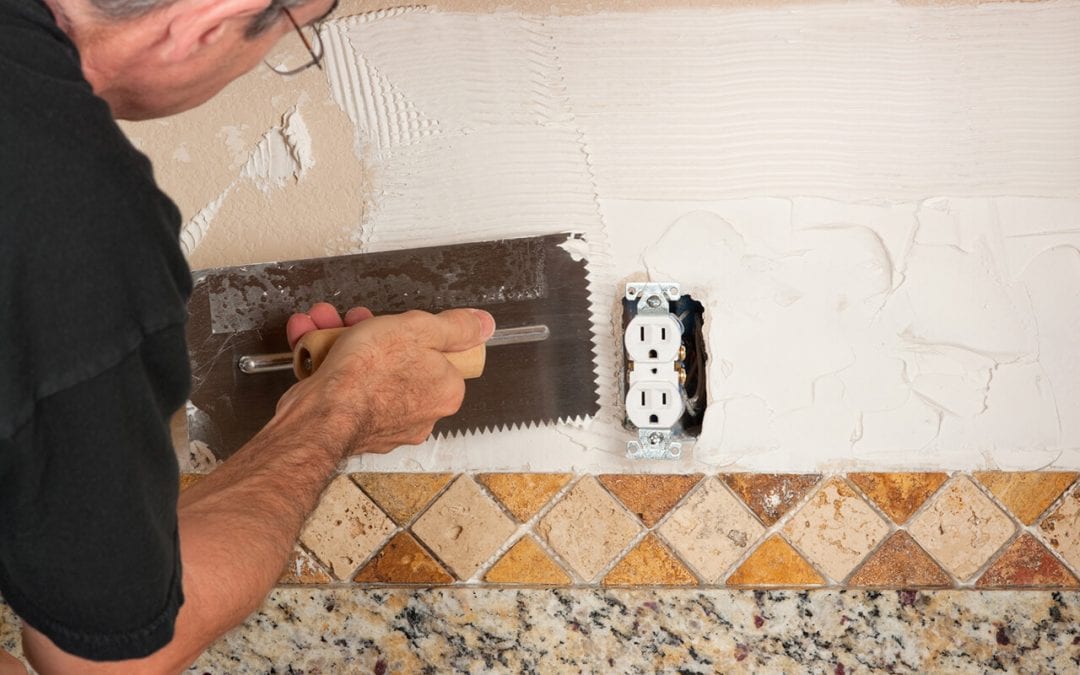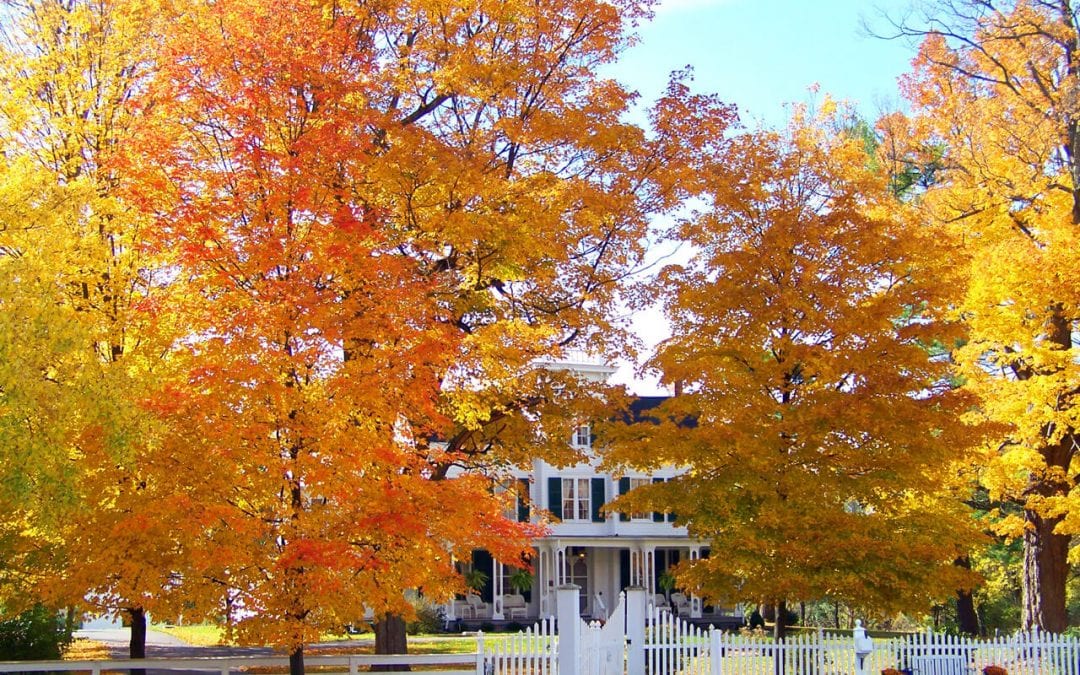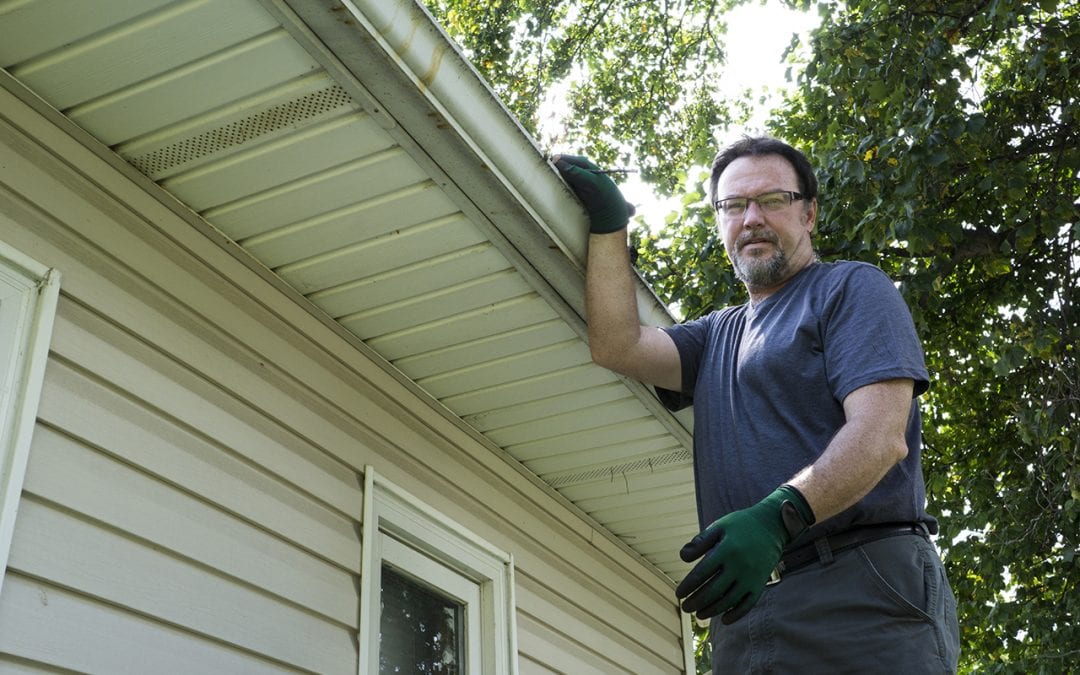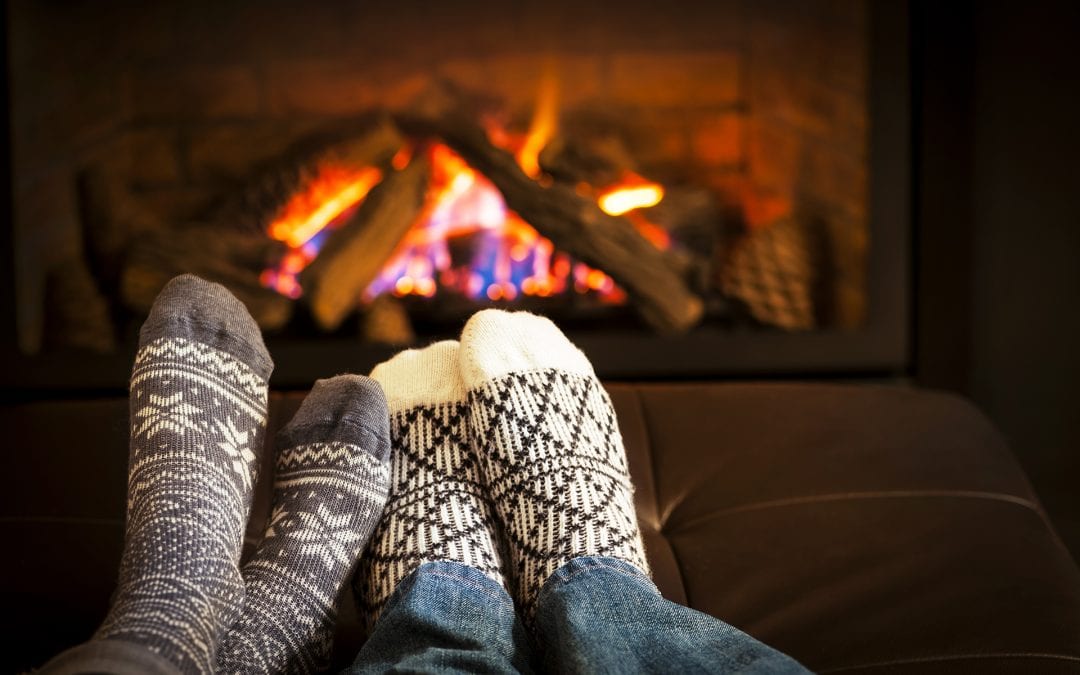
by mwonfor | Jan 18, 2019 | Community, Home Maintenance, Homeowners, Seasonal
Why Home Improvement Ideas for Winter Make Sense
Improving your home regularly is a great way to increase property value. Improvement projects can increase energy efficiency, improve aesthetics, and make it easier to sell later. When you slack off during the winter months and put home improvements on hold, you are missing out on days that otherwise could be used productively. These are some of the best home improvement ideas for winter to consider competing in the next few months.
1. Re-Painting Interior Walls and Trim
Painting walls and trim is often viewed as a cosmetic or decorative activity that does little to improve value. However, periodically painting the walls and trim can protect against and repair some types of damage. This can improve desirability when you attempt to sell your home. When selecting paint colors for interior walls and trim, choose neutral hues that have a broad appeal unless you intend to paint again before you list your home for sale.
2. Adding Insulation to the Attic
As you consider home improvement ideas for winter, energy efficiency should be a focal point. Insulation in your attic plays a vital role because it traps climate-controlled air indoors where you want it instead of letting the warm air rise up through the roof. Your home may need more insulation if it was constructed with low-quality materials initially or if the existing insulation has deteriorated. Consulting with an expert is a smart way to determine if new insulation would be beneficial to your home.
3. Upgrading Flooring
Installing new flooring is a project that can have a big impact on your home. It can improve property value and appeal and reduce cleaning and maintenance tasks. This project can be completed at any time of year, but since it keeps you inside, it’s one of our favorite home improvement ideas for winter. Rip up the carpet and refinish the hardwood underneath, or install an affordable linoleum or vinyl flooring option.
4. Replacing or Adding Backsplash
If your kitchen or bathrooms are looking outdated, replacing the backsplash is an easy way to modernize the style. If you don’t have backsplash already, adding it will upgrade the aesthetic of your home. A do-it-yourself home improvement enthusiast may be able to complete a tile installation project in an afternoon.
Look at your home’s current needs and your budget before deciding which of these home improvement ideas for winter may work well for your home.
American Home Inspection Services provides home inspections and related services to Southeast Michigan. Contact us to request an appointment.

by mwonfor | Sep 20, 2018 | Community, Home Inspection, Home Maintenance, Homeowners, Seasonal
Summer has come and gone and fall is nearly upon us. The kids are back in school, so pack away all the camping, swimming, and other fun summer gear and make sure your home is ready for the first of many cooler days. Use the following 8 tips to help you prepare your home for fall and the coming winter. Doing so will protect you and your home, save you money, and help your home look better next spring.
1. Fertilize the Lawn to Prepare Your Home For Fall
Protecting your lawn over the winter will help it grow more lush and green the following spring. The hot summer stresses grass. Help refortify your lawn with a good dose of fertilizer now. Not only will you enjoy an attractive lawn next year, but your neighbors will also appreciate your efforts.
2. Drain Outdoor Faucets and Sprinklers
Don’t turn your patio, walkway, or driveway into a skating rink overnight. Before that first freeze comes unexpectedly, turn off and drain outdoor water faucets, hoses, and sprinklers. Then you can take steps to prevent pipes from freezing and bursting when the temperatures drop to very cold for long periods.
3. Drain and Store Gardening Equipment
Around mid-October, or earlier if you live far north, mow your lawn for the last time of the year. After that, drain the tanks of your lawn mower, weed eater, and other lawn equipment. If you don’t, unused gas will lead to gunk and other harmful buildups that may ruin your equipment, leaving you to replace it in the spring. Now is a good time to sharpen mower blades.
4. Clean the Gutters
Cleaning the gutters is an important task to prepare your home for fall. Clogged gutters can eventually lead to a damaged foundation and a host of other problems. Grab a ladder and someone to help you to make this task easier. If your house is one story, there are leaf blower attachments available that will help get the job done. If needed, hire professionals to clean the gutters.
5. Get Your HVAC Serviced
Your AC has worked hard all summer and now’s a good time to prepare it for a long winter’s rest. Clean the coils, filters, and air ducts, or you can hire someone to do it for you. Once clean and dry, cover the unit to protect it from debris and ice. Switch thermostats from cooling to heating. Prepare your furnace for its first use this season by cleaning the combustion chamber, inspecting the flue pipe, and changing the filters. Help your heating system function more efficiently by checking for leaks around windows and doors. Use weather stripping and caulking to seal any areas that aren’t airtight.
6. Check and Clean the Chimney
Checking your chimney is an important safety tip to prepare your home for fall. The last thing you want is for smoke, soot, or carbon monoxide to fill the room. Even gas fireplaces need chimneys inspected for bird or squirrel nests blocking the flue. Chimney pipes need to be free of cracks so smoke won’t enter the room. Inspecting and cleaning chimneys is best left to the professionals.
7. Inspect the Roof
Conduct a complete inspection of your roof, or hire a professional home inspector if you are not comfortable. Look for loose, missing, or curled shingles, and wind damage. Stop problems that may turn into leaks through the wind, rain, and snow of winter. Check gutters for loose shingle granules, which may be a sign you need a new roof.
8. Get Ice Melter and Snow Shovels Ready
The first cold, snowy spell can be a surprise, leaving customers scrambling for supplies at the last minute. Beat the crowds and get ice and snow-clearing supplies and equipment ready now to prepare your home for fall. You may even consider investing in a snow blower so that you can avoid strenuous snow shoveling. You will likely save money by buying them when they are not in such high demand.
In Michigan, it can turn from fall to winter very quickly. Be sure to check out our post about preparing your home for winter.
American Home Inspection Services serves Southeast Michigan with home inspection services. Contact us to schedule an appointment.

by mwonfor | Jul 19, 2018 | Community, Home Maintenance, Seasonal
Spring seems to be the time when the lawn takes care of itself. A lawn that was dormant all during the winter suddenly comes back lush and green. It does not seem to need mowing very often, and if rain is abundant, it may not even need to be watered. However, the heat of summer can make lawn maintenance more difficult. Here are tips to help maintain a healthy summer lawn:
For a Healthy Summer Lawn, Fertilize Every 6-8 Weeks
Fertilizing strengthens the grass and helps it endure summer’s heat and drought. A slow release fertilizer is best when applied in early Spring, and there are different fertilizers depending on whether the lawn is in the north or in the south. Keep feeding the lawn every 6-8 weeks until the fall. Some fertilizers come with additives to control pests and help the lawn retain water.
Don’t Cut It Too Short
Though the grass may be growing quickly by summer, it still should not be mowed more than a third of the height of the grass blade for a healthy summer lawn. Tall blades are better able to send their roots deep into the soil to find water, and they also shade the soil beneath which keeps the ground cool and discourages weeds. Though some homeowners think it’s a little unsightly, it’s best to leave the grass clippings on your lawn after mowing. They provide valuable nutrients that contribute to a healthy summer lawn.
Treat for Grubs
If grubs are a problem when it comes to the lawn, the earlier they are dealt with the better. One natural way is to add beneficial nematodes at about 50,000 per square foot of lawn. Milky spore powder also takes care of grubs, as does 5 percent rotenone solution, pyrethrin, and neem oil.
Eradicate Weeds While They’re Seedlings
As for weeds, it’s best to eradicate them while they’re still young. Some weeds can be treated with an herbicide that doesn’t hurt the grass, while others are so invasive that they need to be pulled up from the roots.
Water Deeply and Early for a Healthy Summer Lawn
During the midsummer, it’s a good idea to check how deeply the water penetrates the lawn after it’s watered. The best time to water the lawn is early in the morning so the soil is able to absorb the water before it evaporates in the hot sun.
American Home Inspection Services is Southeastern Michigan’s premier service provider for home inspections, commercial inspections, radon testing, mold inspections, mobile home inspections, and home watch services. Contact us to schedule your appointment.

by mwonfor | May 21, 2018 | Community, Home Maintenance, Seasonal
During the summer months, there’s no better way to enjoy the outdoors with friends and family than grilling out. In order to keep your gas grill functioning well for years to come, it is important to properly clean and maintain it. The more you cook on the grill, the more there is to clean. Over time, greasy residue and buildup can clog burners and even become a fire hazard. Here are 3 tips on how to clean and maintain a gas grill:
Monthly Leak Check
It’s a good idea to get into the habit of doing routine propane leak checks. About once a month, you should turn the propane on and pour soapy water over the connections. You’ll notice bubbles if there is a hole in any of the lines. If no bubbles are present then there is no leak. If you notice bubbles you should replace the line or tighten the connections to the tank.
Use a Cover to Maintain a Gas Grill
It is always a good idea to use a cover over the grill whenever it isn’t being used. Exposure to the elements can cause rust and damage the grill. Rust can ruin a grill and cause it to become non-functional. Most grill manufacturers make specific covers for their grills. It is worth the investment to purchase one.
Clean Regularly
Keeping your grill clean is the best way to ensure it lasts for years. After each time you cook, it is important to use the wire brush to clean the gunk off the grates. Wiping down the exterior with soapy water is also a good idea to keep the grill properly maintained. Deep cleaning of the grill only needs to be done every couple of months as needed. Deep cleaning consists of actually removing the burner protectors and wiping debris from the burners. Finally, you’ll want to get rid of all the gunk in the bottom of the grill. All of this can be done with soapy water and a sponge.
By using these tips to maintain your gas grill, you can ensure it lasts for years worth of cookouts. The key to a long-lasting gas grill is proper care and maintenance. By inspecting your grill for propane leaks, keeping it covered, and cleaning thoroughly, you can expect your grill to last for years.
American Home Inspection Services helps home buyers, home sellers, and homeowners in Southeastern Michigan know everything they can about their home. If you would like to schedule a home inspection service, click here to contact us.

by mwonfor | Apr 20, 2018 | Home Inspection, Home Maintenance, Seasonal
Spring Home Maintenance is Important for Every Homeowner
Many people believe spring cleaning is only about cleaning out closets, dusting off sports equipment, or digging a path through the garage. However, it’s also a perfect time to check and see how your house has fared during the harsh winter. You may find damages that need repairing and the yard will need prepping for spring and summer plants. Here are 7 spring home maintenance tasks to help prepare your property for the warmer seasons.
1. Watch for Swarming Termites
Termites swarm out of their colonies beginning in March and lasting until May or June in order to find new territory for a colony. When you see a dark cloud of swarming insects, call a pest control company immediately.
2. Check Out the Roof
If you feel comfortable, climb up a ladder to get a closer look at your roof. If you see anything that looks less than perfect, you may want to bring in a professional home inspector to inspector to evaluate the condition of the roof.
You’ll be looking for curling shingles, missing shingles, the bottoms of metal pipes that are damaged, and generally anything that doesn’t look right. Be sure to take photos in case you decide to file anything with your homeowner’s insurance. If you need repairs or an entirely new roof, make sure the roofer you hire is licensed and insured.
While you are up there, notice the gutters. Are they all still attached to the roof? It’s important to repair any areas that may have come loose, and give them a good cleaning. Otherwise, rain may find its way into your foundation causing mold and mildew, and it may also rot the wood of your eaves.
3. Look at the Siding and Wood
Pressure wash the siding on the house or hire a pressure washing service. This keeps mold and mildew from getting a foothold. Also check wooden stair rails on porches, the wood on the deck, and any wood on the property such as pergolas or wooden pathways through gardens.
Replace weak or loose parts. As part of spring home maintenance, have it treated by a professional. Wood around windows and doors should also be checked. Clean it, prime it, and paint it if it is looking ragged. Wood that isn’t strong and primed is an open invitation to termites and bugs.
4. Inspect the Driveway and Walkways
Asphalt and concrete suffer in winter, too. Cracks in driveways and sidewalks, paths through gardens, or the deck around a swimming pool can develop into major issues. Address them when they’re just cracks instead of craters and you’ll save a lot of money down the road.
5. Check the Foundation
Look at the foundation floor, walls, and concrete. If there are cracks, buckling, or anything that doesn’t look right, call a professional immediately. If two quarters will fit into a crack, then your slab or foundation needs help.
6. Bring in an HVAC Technician
When you press the button, the cool air comes on. That doesn’t mean the system is working properly, though. Efficiency could rest on such a simple thing as a filter. Be sure to have a professional look the system over from the unit outdoors to the ducts indoors.
7. Landscaping
Trees hanging over the roof are trouble. Trim them back or remove them if they look like they could fall on your house. Check other vegetation. If it grows up against the house, it could loosen the mortar in bricks or damage your siding. Trim back everything and pull all vines off the side of the house.
American Home Inspection Services provides Southeastern Michigan with certified home inspection services. Contact us to book your appointment.

by mwonfor | Jan 30, 2018 | Home Maintenance, Seasonal
Keep Your Fireplace Safe With Our Fireplace Safety Tips
Winter is here, which means that if you have a fireplace, you’re probably using it quite a bit. It’s important that you follow all the necessary precautions to keep your fireplace safe when doing so. Your fireplace should be a source of comfort and warmth; you don’t want things to get out of hand. It’s a good idea to install a photoelectric smoke detector close to your fireplace to increase fireplace safety. You may also want to install an ionization model which is better at detecting large fires. It’s also a smart move to put a CO detector near your fireplace, not just by the rooms you sleep in. Glass fireplace doors tend to have vents that can let carbon monoxide re-enter the room if there is negative pressure in your home.
Check Out Your Fireplace With a Flashlight
If you are using your fireplace, it’s important to know of any potential hazardous buildup inside. Look up into and around your fireplace, using a flashlight to light your way. You should call a chimney professional for help if you find cracks or gaps of any kind or a buildup of soot. If you see black stuff inside, that’s called creosote and it’s highly flammable. You won’t want to try cleaning it out by yourself, however, so call in the pros.
Check the Damper for Fireplace Safety
It should be easy to open and close your damper. If there’s resistance or a blockage, it’s possible that some sort of animal or bird is nesting there. Be sure to bang on the damper before opening if you suspect this is the case, otherwise you could end up with an unwanted surprise guest in your living room. Have your chimney cleaned professionally if there are any signs that wildlife has taken up residence there.
Make Certain that the Chimney Professional You Hire is Certified
If you need to go the route of hiring a pro to ensure your fireplace safety, look for someone with respectable credentials, such as certification from the Chimney Safety Institute of America. A certified chimney sweep should carry a top-of-the-line camera fitted with LED lighting that will allow him or her to get a good view of what’s going on inside of your chimney, including places you wouldn’t be able to view without this equipment.
Start Out Small
Before you start up a major blaze, build a smaller fire with just a few logs made of seasoned hardwood. This will ensure that the first fire you build burns safely. Start by opening the damper and letting the flue warm up. You don’t want to start a fire while there’s still cold air in your chimney since the downdraft could draw smoke into your house. Before starting your fire, light a rolled-up newspaper in the fireplace’s opening until the air starts to rise.
Make Sure the Mantel Doesn’t Get Too Hot
This step to keep your fireplace safe is of particular importance if you’ve got a flat-screen TV mounted above your fireplace. After your fire has begun to roar, put a candle on the mantel. If the candle starts to melt, then you’ll want to find another place to put anything that could be damaged by heat, like your electronics. If the mantel or the walls grow too hot to touch or if smoke is present anywhere inside your house, including in your attic, then contact a chimney professional as soon as you can.
For more tips to keep your fireplace safe check out this article from HGTV.
American Home Inspection Services serves Oakland, Wayne, and Livingston counties in Southeast Michigan with home inspections and related services. Give us a call today at (248) 459-7007 or request your appointment online.






